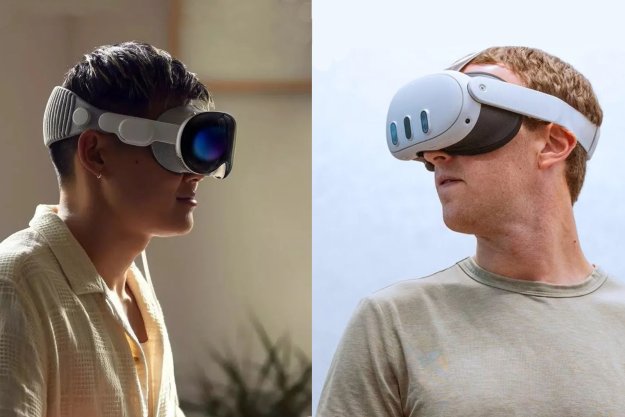In the days leading up to the launch of the Quest Pro, Meta CEO Mark Zuckerberg has called the new headset a “great working device” — possibly even a laptop replacement. Gaming in VR is one thing — but socializing, living, and working there? It seems as if the broad consensus on the internet is: “no thanks.”
But not me. I’m ready and excited to move my working life into virtual reality, and from what we know so far, the Quest Pro just may be the device that fixes many of the current problems with trying to do so on current-gen hardware.
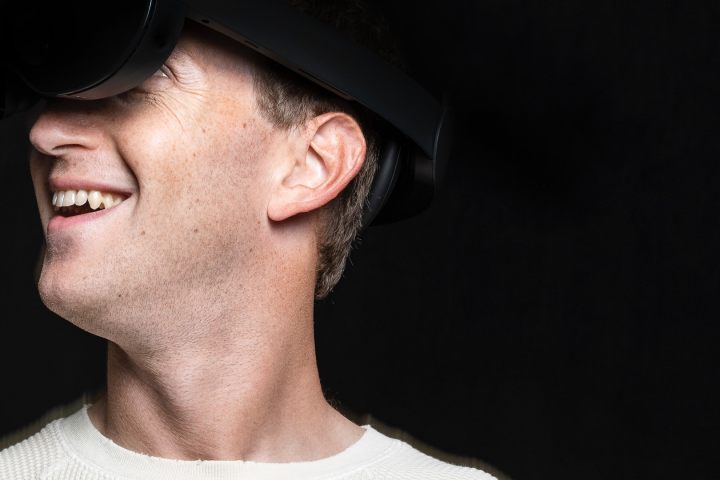
What’s better than a mouse?
Navigation is one of the main hang-ups with trying to work in VR at the moment. Work requires being as efficient as possible, which isn’t exactly what you’d call the current VR controls.
With a current Meta Quest headset, you’re stuck using the two controllers. They’re quite comfortable and accurate, but it feels a bit like typing with two fingers. You have the option of pairing a mouse and keyboard with a Quest 2, of course, or you can even put down the controllers and use your hands to interact with the environment. The variety is nice, but none of it is so different from what’s possible with a laptop or PC.
Replacing the mouse and keyboard, though, is no easy feat. As effective has touchscreens have become, most people feel that when it comes to getting real work done, the mouse (or pointer) and keyboard is still the most efficient.
The real innovation comes with eye tracking, which is a feature that is certain to be demonstrated with the Quest Pro at tomorrow’s Meta Connect event. With this new VR headset, you’ll be able to use your gaze to control guide input. This subtle difference could provide a dramatic boost in productivity.

Have you ever made the mistake of looking at one window or screen and beginning to type while another window is active? Your keystrokes and text will affect the active window. This can be disastrous if you have an app open that accepts keyboard commands. A few words that you thought would be typed into a document or text field could become a series of commands that send unfinished emails, merge layers, or delete documents.
With eye tracking, the Quest Pro should be able to avoid this nightmare. If eye tracking is used to identify the active window, gestures, button presses, and keyboard input will be sent to the window and app that you’re looking at. This is just one example of how a VR headset can be more intuitive since it has access to new forms of input and can work in a way that matches natural human interactions instead of forcing us to learn to do things the way the computer expects.
Are VR screens better than real computer monitors?
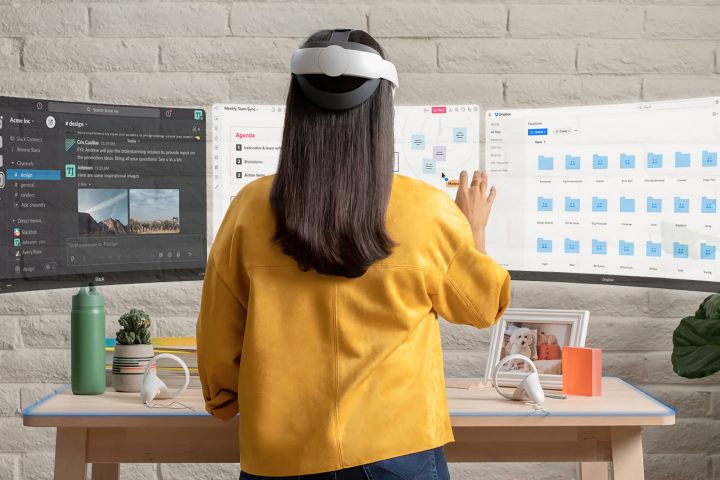
Screens are the next big hurdle with moving work into VR, but this is an area where the metaverse already has an advantage. Virtual screens remove all of the hassles of buying and setting up physical computer monitors. You can create several, large virtual displays at no extra cost and without requiring a large desk or wall mount to hold bulky screens. With a high-quality VR headset, you can use a multiscreen setup anywhere whether sitting, standing, or even lying down.
I’ve tried using a computer with three monitors, a MacBook with an iPad connected via Universal Control, and a computer with a phone as a secondary device. None really works ideally because they are physical objects with restrictions on size, location, and input. Breaking out of the old way of computing could easily provide us with a far better solution.
A VR headset’s virtual monitors behave more like floating windows in a 360-degree environment than regular screens. This provides the most flexibility possible to create displays in different aspect ratios and sizes. You can make a portrait screen for writing or formatting a print document, a landscape display for traditional computer work, or place a small screen nearby in your virtual space to design something that will be viewed on the screen of a phone or a watch.
Of course, most VR headsets at the moment lack the dynamic range and color fidelity of a high-quality computer monitor. That will improve over time, and Meta’s Quest Pro should offer a significant improvement in display quality since it is rumored to have mini-LED backlighting and a higher resolution than the Quest 2.
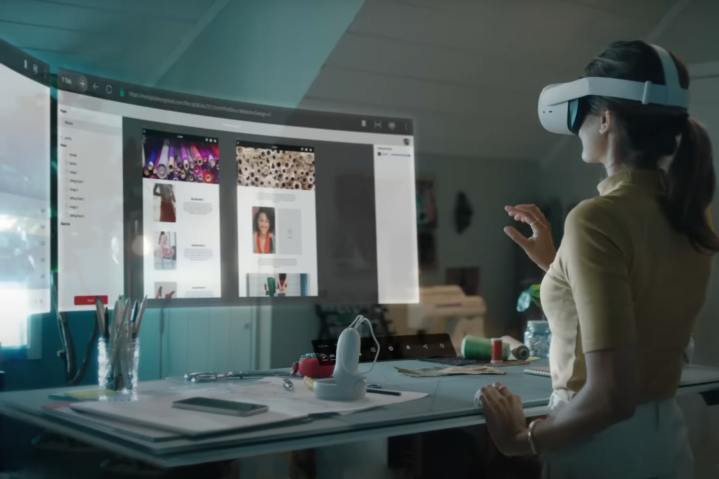
A VR headset also shows a slightly different image to each eye, providing depth to objects. Very few computer displays have this capability. This is a game-changing difference if you design real-world products or architecture, or if you work with 3D graphics.
With a Quest 2, you can create a 3D model by directly drawing and manipulating objects. You can ditch flat screens entirely and physically walk around a virtual building and get a sense of the flow and scale. Both virtual and augmented reality solutions are revolutionary in this regard, making concepts look and feel more real.
Virtual meetings might be better than reality
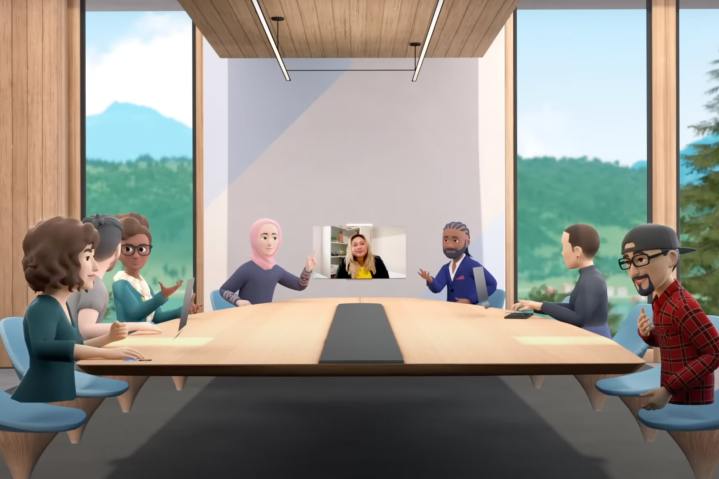
As videoconferencing has become a more and more important part of our online work lives, taking these meetings into VR has some very positive benefits. Nothing beats being face-to-face, sure, but when that’s not possible, it’s easy to see how meeting in VR beats standard video calls.
First off, even the fastest flight or work commute is painfully slow compared to teleporting to a virtual workspace, and Horizon Workrooms is just one example of how a team can come together to present and share ideas in a way that’s more personal than a video call by using VR headsets.
Right now, the problem is with avatars and tracking. There’s little benefit with the current technology, which doesn’t give you access to the full range of body language and facial expression needed to properly communicate. The technology is still evolving, and Meta’s current avatars have plenty of room for improvement, that’s for sure.
But avatars are rumored to get a big upgrade with the Meta Quest Pro, making your virtual presence feel more real. With eye and face tracking, your avatar will look more realistic than ever to others, showing your reactions and where you’re looking, just as if you were present. On the flip side, your view of the environment can be brighter, sharper, and more realistic with processor and display improvements. If there’s one part of work that feels best suited for the metaverse, it’s certainly meetings, and I can’t wait to have more interactive and engaging meetings with my colleagues in the future.
Drawbacks and solutions for working in VR
It’s not all good news when working in VR. Sharing in person is more difficult with a VR headset since no one can glance over and see your screen. That might be a good thing if you want to avoid distractions or are working on a sensitive project. Your screen is automatically private when wearing a VR headset and audio is quite muted to others when wearing a Quest even if you don’t have earbuds in. If you want to share your Meta Quest screen with others that are nearby, it’s easy to cast from your Quest to a TV, phone, tablet, or computer.
Remote meetings are easier to set up without VR, but the virtual environment has some advantages. Sometimes you might not feel like you are presentable for a work meeting, but your avatar will look as dapper as ever — even if you just rolled out of bed and are wearing pajamas.
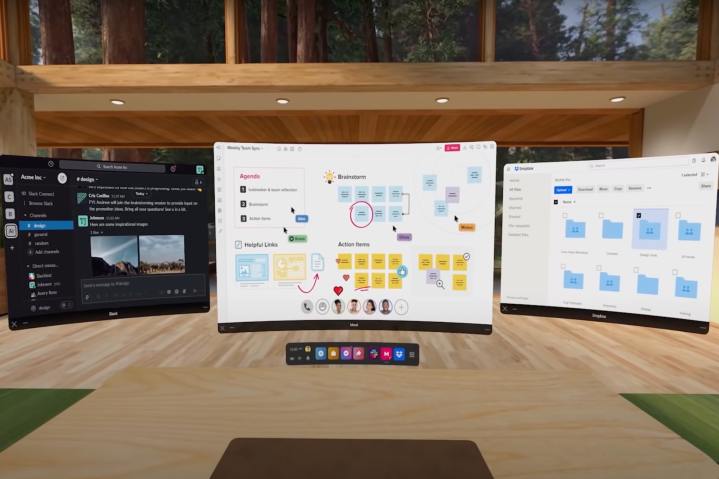
The multiscreen advantage can also help with meetings since your virtual space has room for people, notes, reference material, a whiteboard, and more. You can even present three-dimensional art that would be difficult to experience with a traditional flat computer display.
Another concern with VR productivity is discomfort after only a few hours of wearing a headset. The Quest 2 is relatively light and isn’t a problem in the short term, but you’ll often notice an imprint on your face from the pressure of the headset. It can cause headaches and skin irritation. A lighter headset with better weight distribution that improves overall comfort will help.
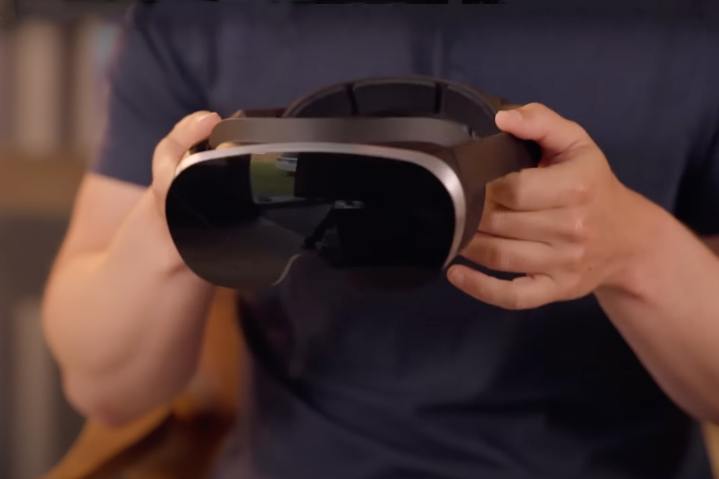
Meta has already shared that it’s planning on using pancake lenses, which are thinner and lighter. This type of lens also features a larger sweet spot of sharp focus. Meta’s Quest Pro is also expected to have its battery mounted at the rear to balance the weight for greater comfort.
Lastly, mobility is greatly limited when wearing a current Quest VR headset even though you can trigger a passthrough view of your real room. The trouble is that you’re seeing through a low-resolution, black-and-white camera.
The Quest Pro will have a higher-resolution color passthrough camera, allowing you to travel around your physical room without the need to remove your headset. Rumors suggest Meta will offer a docking station for its next-generation headset that makes it quicker and easier to switch between wearing the Quest Pro and charging it so it’s ready to go at a moment’s notice.
Performance is the final piece of the puzzle. The Quest 2 is a relatively slow device when compared to your desktop computer, with most laptops putting it to shame in benchmarks. However, it was released in 2020, and the Quest 2 still tops the list of best VR headsets. It doesn’t lag when playing games, but when using the browser, some slowness is apparent. That’s where its age shows.
Meta’s Quest Pro will feature upgraded hardware meant for professionals, and rumors suggest its performance might be similar to that of a Chromebook or a tablet. That suggests the Quest Pro won’t reach the top levels of computing power, but it should have enough power to run most web apps with decent speed.
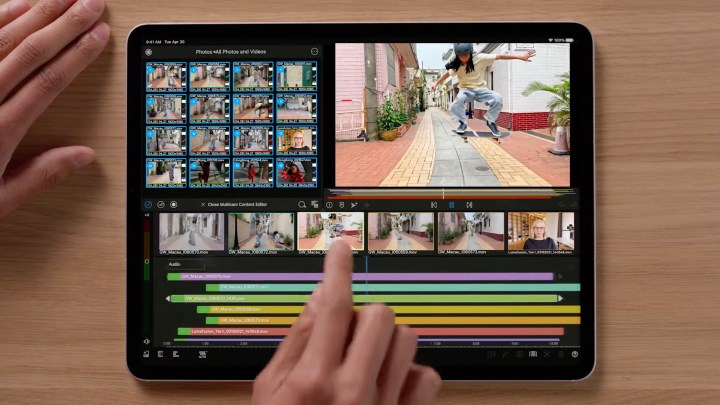
Whether that’s fast enough or not depends on your usage. I wouldn’t expect to edit 4K videos with a Quest Pro or use it to bulk-process RAW photos. But as a writer, I generally only need a computer that can handle some intensive internet browsing, WordPress, Google Sheets, and similar web apps. The Quest Pro could finally bring enough performance for writers, researchers, salespeople, managers, executives, and anyone who spends a large portion of their workday using a web browser.
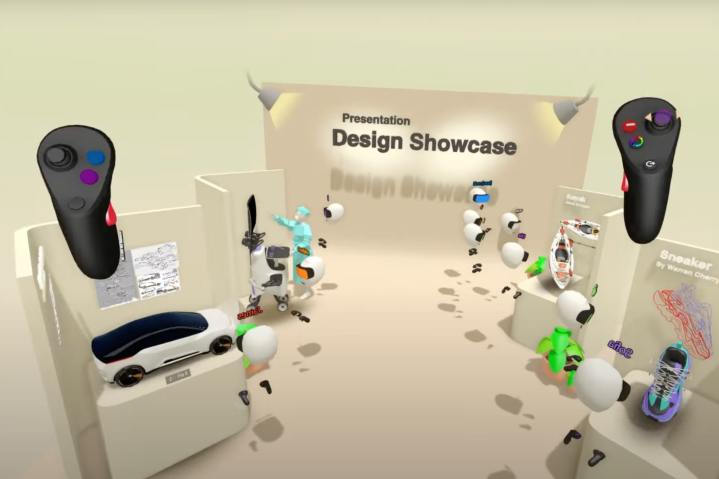
Just as the Quest 2 can run intensive games that are well-optimized, the Quest Pro should be able to handle even more challenging tasks if a dedicated app is designed to work within its limitations. A good example is Gravity Sketch, a professional-level 3D modeling app that runs well in a Quest headset.
We’ll have to wait and test it ourselves to know for sure, but performance is an essential ingredient to replicating the work experience in VR.
Ready to dive in
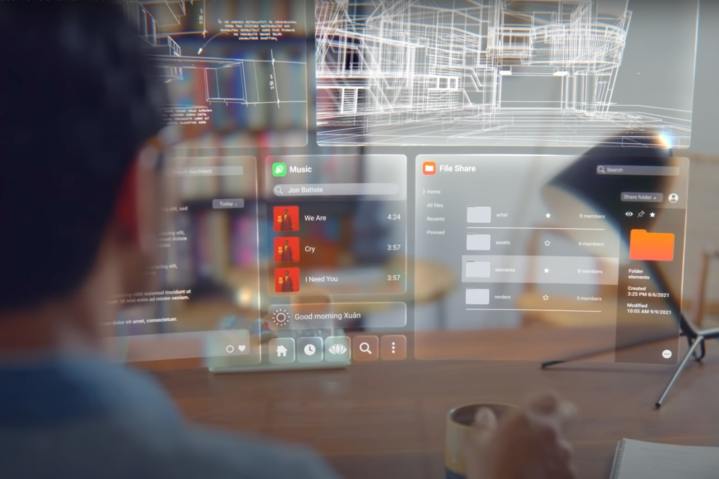
As excited as I am for the future of working in VR, a lot rests on future hardware. So far, it feels like the Quest Pro could be the headset that makes working in VR less of a headache. Of course, a lot rests on what Apple will do, but you can bet it won’t be angling its headset only toward games.
For those of us ready to dive in, there’s bound to be lots of hurdles still ahead as the technology improves. But I, for one, am excited about how the software and hardware of these new products will make working in VR both more efficient and enjoyable in the future.
Editors' Recommendations
- Meta has a bold new strategy for VR
- 8K VR comes to the Quest 3
- This one feature could prevent motion sickness, but the Vision Pro doesn’t have it
- Best Meta Quest 2 deals: Save big on the VR headset today
- Why the future of the Quest depends on the Vision Pro


